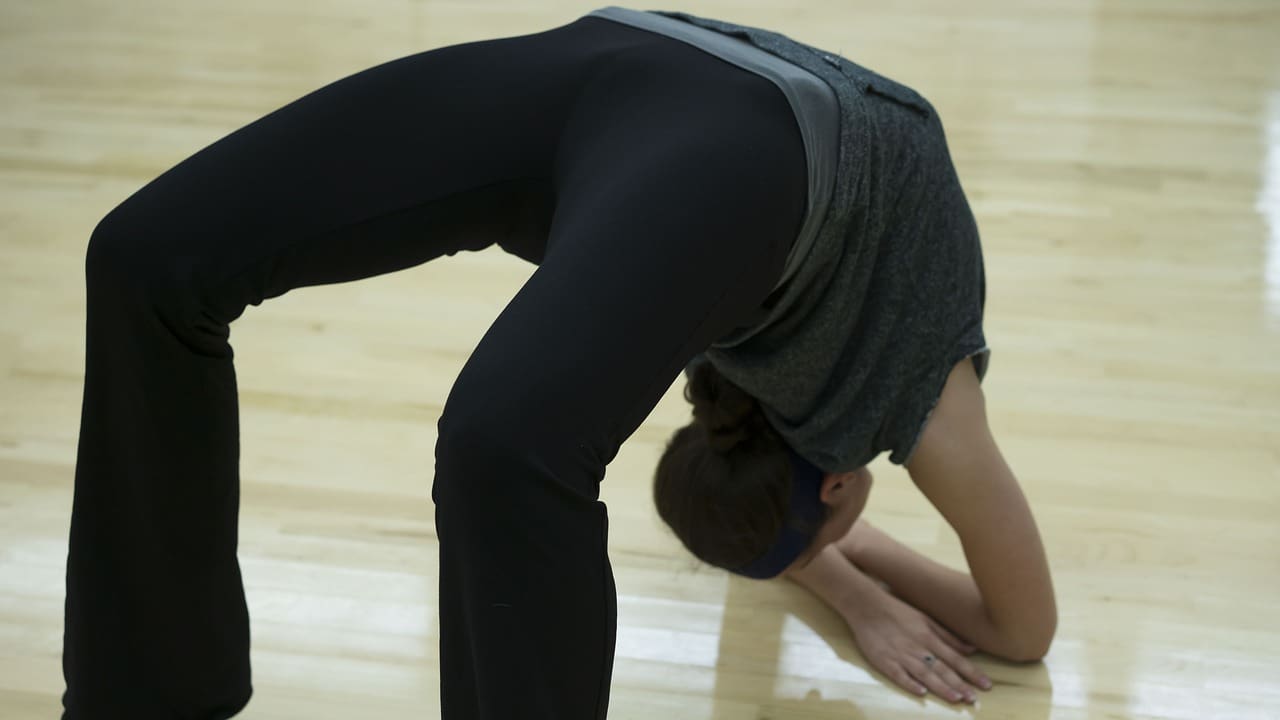Welcome to an article on the top ways to improve flexibility for disc protrusion prevention. In this piece, you will learn some simple yet effective ways to enhance your flexibility, thereby reducing the risk of disc protrusion and back pain. By incorporating these tips into your daily routine, you can strengthen your muscles and improve your range of motion, leading to a healthier and stronger spine. Let’s dive in and explore these techniques together! Have you been experiencing back pain or discomfort lately? Are you looking for ways to prevent disc protrusions and improve your overall flexibility? In this article, we will discuss some of the top ways to increase your flexibility to help prevent disc protrusions and keep your back healthy. By incorporating these strategies into your daily routine, you can strengthen your back muscles and improve your range of motion, leading to a healthier and more flexible spine. Let’s dive in and explore the top ways to improve flexibility for disc protrusion prevention.

Importance of Flexibility for Disc Protrusion Prevention
Flexibility plays a crucial role in preventing disc protrusions and other spinal issues. When your muscles are tight and inflexible, they can pull on your spine and put extra stress on your intervertebral discs, which can increase the risk of disc herniations or protrusions. By improving your flexibility, you can decrease the strain on your spine and reduce the likelihood of developing disc-related problems.
Ensuring that your muscles are flexible can also help you maintain proper posture, which is essential for preventing back pain and promoting overall spinal health. Improving flexibility through stretching exercises can help you increase your range of motion, reducing stiffness in your muscles and joints. Additionally, flexible muscles are less likely to suffer from muscle strains or injuries, making them more resilient and less susceptible to damage.
Stretching Exercises for Flexibility
Incorporating regular stretching exercises into your daily routine is one of the most effective ways to improve flexibility and prevent disc protrusions. Stretching helps to lengthen your muscles and improve their elasticity, increasing your range of motion and reducing stiffness. By performing a variety of stretching exercises targeting different muscle groups, you can improve your overall flexibility and decrease the risk of muscle imbalances that can lead to back pain and other issues.
Here are some stretching exercises that you can try to improve your flexibility and prevent disc protrusions:
-
Hamstring Stretch: Sit on the floor with one leg extended straight in front of you and the other leg bent. Reach forward towards your toes, keeping your back straight, and hold the stretch for 15-30 seconds. Switch legs and repeat on the other side.
-
Quadriceps Stretch: Stand up straight and bring one heel towards your buttocks, grabbing your ankle with your hand. Hold the stretch for 15-30 seconds, then switch legs and repeat on the other side.
-
Cat-Cow Stretch: Get on your hands and knees, with your wrists directly under your shoulders and your knees under your hips. Arch your back towards the ceiling (cat stretch), then drop your belly towards the floor and lift your head and tailbone towards the ceiling (cow stretch). Repeat this sequence for 1-2 minutes.
-
Child’s Pose: Sit back on your heels with your knees wide apart and your toes touching. Reach your arms forward on the floor and lower your chest towards the ground, resting your forehead on the mat. Hold the pose for 1-2 minutes to stretch the muscles in your back and hips.
By incorporating these stretching exercises into your daily routine, you can improve your flexibility and help prevent disc protrusions by keeping your muscles loose and supple.
Yoga and Pilates for Flexibility
Yoga and Pilates are two excellent forms of exercise that can help improve flexibility, strength, and overall posture. Both disciplines focus on controlled movements, breathing techniques, and proper alignment, which can help prevent disc protrusions and other spinal issues by strengthening your core muscles and improving your flexibility.
Yoga incorporates a series of poses that target different muscle groups and joints, promoting flexibility, balance, and relaxation. By practicing yoga regularly, you can increase your range of motion, reduce tension in your muscles, and improve your posture, all of which are essential for maintaining a healthy spine. Some yoga poses that are particularly beneficial for improving flexibility and preventing disc protrusions include:
- Downward Facing Dog
- Cobra Pose
- Triangle Pose
- Seated Forward Bend
Pilates focuses on core strength, stability, and flexibility, with a particular emphasis on the muscles that support your spine. By engaging your core muscles and maintaining proper alignment throughout each movement, you can strengthen your back and abdominal muscles, improve your posture, and reduce the risk of disc protrusions. Pilates exercises that target the core and promote flexibility include:
- Pilates Hundreds
- Swan Dive
- Side Leg Lifts
- The Saw
Both yoga and Pilates offer a wide range of benefits for improving flexibility and preventing disc protrusions. By incorporating these practices into your fitness routine, you can strengthen your core muscles, improve your posture, and increase your range of motion, leading to a healthier and more flexible spine.
Benefits of Yoga and Pilates for Disc Protrusion Prevention
Yoga and Pilates offer numerous benefits for preventing disc protrusions and maintaining a healthy spine. By improving your flexibility, strengthening your core muscles, and promoting proper alignment, these practices can help reduce the risk of disc herniations and other spinal issues. Additionally, yoga and Pilates focus on mind-body awareness and relaxation techniques, which can help reduce stress and tension in your muscles, further supporting your spinal health.
One of the key benefits of yoga and Pilates for disc protrusion prevention is their focus on core strength and stability. By strengthening your core muscles, you can better support your spine and reduce the strain on your intervertebral discs, decreasing the risk of disc herniations or protrusions. Core strength also helps improve your posture, which can alleviate back pain and promote overall spinal health.
Another benefit of yoga and Pilates is their emphasis on flexibility and range of motion. By performing a variety of poses and exercises that target different muscle groups and joints, you can increase your flexibility, reduce muscle stiffness, and improve your overall range of motion. This can help prevent muscle imbalances that can lead to back pain and other issues, as well as reduce the likelihood of disc protrusions caused by tight or inflexible muscles.
In addition to physical benefits, yoga and Pilates also offer mental and emotional benefits that can support disc protrusion prevention. Both practices incorporate breathing techniques, mindfulness, and relaxation exercises that can help reduce stress, alleviate tension in your muscles, and promote a sense of well-being. By incorporating these practices into your daily routine, you can improve your mental and emotional health, which in turn can positively impact your physical health and spinal well-being.

Strength Training for a Healthy Back
Incorporating strength training exercises into your fitness routine can help support disc protrusion prevention by strengthening the muscles that support your spine and improving your overall posture. By building muscle strength, you can reduce the strain on your spine, increase your stability, and prevent muscle imbalances that can lead to back pain or spinal issues.
Strength training exercises that target the muscles in your back, core, and hips can help improve your spinal health and reduce the risk of disc protrusions. By focusing on exercises that strengthen these key muscle groups, you can support your spine, improve your posture, and decrease the likelihood of developing back pain or other issues. Some strength training exercises that are particularly beneficial for disc protrusion prevention include:
- Deadlifts
- Rows
- Planks
- Squats
By incorporating these strength training exercises into your fitness routine, you can build muscle strength, improve your posture, and support your spine, leading to a healthier and more resilient back.
Benefits of Strength Training for Disc Protrusion Prevention
Strength training offers numerous benefits for preventing disc protrusions and promoting spinal health. By building muscle strength, you can support your spine, improve your posture, and reduce the risk of muscle imbalances that can lead to back pain or other spinal issues. Strength training exercises that target the muscles in your back, core, and hips can help strengthen your spine and reduce the strain on your intervertebral discs, decreasing the likelihood of disc herniations or protrusions.
One of the key benefits of strength training for disc protrusion prevention is its ability to strengthen the muscles that support your spine. By targeting the muscles in your back, core, and hips, you can increase your stability, improve your posture, and reduce the strain on your intervertebral discs. Strong muscles provide better support for your spine, helping to prevent disc herniations and other spinal issues caused by weak or imbalanced muscles.
Strength training also helps improve your overall posture, which is essential for preventing back pain and promoting spinal health. By strengthening the muscles in your back, core, and hips, you can maintain proper alignment and reduce the risk of postural imbalances that can lead to back pain or other issues. Good posture can help alleviate back pain, improve your breathing, and support your spine, leading to a healthier and more resilient back.
In addition to physical benefits, strength training also offers mental and emotional benefits that can support disc protrusion prevention. By engaging in regular strength training exercises, you can increase your confidence, reduce stress, and improve your overall well-being. Building muscle strength can boost your mood, increase your energy levels, and enhance your quality of life, all of which contribute to a healthier and more resilient back.

Conclusion
Improving your flexibility is essential for preventing disc protrusions and promoting overall spinal health. By incorporating stretching exercises, yoga, Pilates, and strength training into your fitness routine, you can increase your range of motion, strengthen your back muscles, and reduce the risk of disc-related issues. By focusing on core strength, stability, and proper alignment, you can support your spine, maintain good posture, and prevent muscle imbalances that can lead to back pain or other problems.
Remember to listen to your body and progress at your own pace when incorporating these strategies into your routine. Consistency is key when it comes to improving flexibility and preventing disc protrusions, so make sure to stay committed to your practice and prioritize your spinal health. With dedication and perseverance, you can achieve a healthier and more flexible spine, free from the discomfort and limitations of disc protrusions. Start incorporating these top ways to improve flexibility for disc protrusion prevention into your daily routine today and reap the benefits of a strong, flexible, and resilient back.

